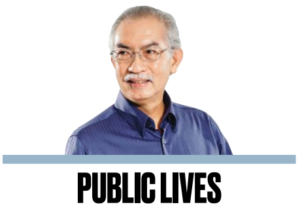Hunger, as Inquirer columnist Mahar Mangahas wrote yesterday, remains a perennial problem.
Many Filipinos are struggling to put food on the table amid inflationary prices and the shortage of agricultural products since last year, and it is fair to say that those in the marginalized sector are most likely unable to eat three square meals a day. A typical meal in poor communities consists of rice and “kropek” (fish crackling), or rice with coffee or salt — if they can afford it. Some skip meals: 11.8 percent of Filipino households — or about three million families — said they have experienced hunger at least once in the previous three months, according to the latest survey on hunger by the Social Weather Stations.
The figure is slightly above the 11.3 percent in October 2022 and 11.6 percent in June 2022. Mindanao reported the highest hunger rate at 12.7 percent, followed by the Visayas at 12 percent, Metro Manila at 11.7 percent, and Balance Luzon (Luzon outside Metro Manila) at 11.3 percent. Of those who experienced hunger, 9.5 percent or about 2.4 million families experienced “moderate hunger” (those who experienced hunger “only once” or “a few times”), while 2.3 percent or almost 600,000 families experienced “severe hunger” (those who experienced hunger “often” or “always”).
The end of cash dole-outs will further aggravate the situation of the most vulnerable households after the government stopped its targeted cash transfer (TCT) program on Dec. 31, 2022. The government paid out a total of P18.3 billion in unconditional cash transfers of P500 per month over six months to the most affected households to mitigate the effects of the increase in the prices of fuel and other nonfuel commodities. TCT, which started under the previous administration, benefited 9.2 million households. The government said it is now going to focus efforts on ensuring the food supply and bringing down the inflation rate.
Sounds like a good plan. But to cut a crucial lifeline for the poor as a global recession looms, while public officials go on foreign trips and expend government resources on other unnecessary matters, only sends the wrong message.
In the 2022 Global Hunger Index, the Philippines ranked 69th out of 121 countries. It scored 14.8, putting its level of hunger in the “moderate” range. However, it’s one thing to be able to simply fill empty stomachs and another thing to eat nutritious food. A 2018 United Nations World Food Program (WFP) study, “Fill the Nutrient Gap,” found that almost all Filipino households can afford a diet that meets energy needs, but only a third of the total population can afford food that meets their nutritional needs. This impacts children the most especially since they need nutrition to fuel their mental and physical growth. “The non-affordability of nutritious food is directly linked to high stunting prevalence in the country,” said WFP. In 2018, WFP already warned that there has been little progress in addressing undernutrition and that malnutrition has become widespread in the country. “This growing double burden hinders the country’s potential for social and economic development,” it said, noting that 33 percent of children under the age of five years (or around four million) were stunted and unlikely to reach their full mental and physical potential.
The Philippines, together with other UN member states, has committed to achieving the 17 Sustainable Development Goals (SDGs), including ending hunger, by 2030. This entails ensuring access by all people—particularly the poor and people in vulnerable situations, including infants—to safe, nutritious, and sufficient food all year round. How much has the government accomplished in this goal so far? A report by the Philippine Statistics Authority on the progress of the SDGs based on 2022 targets showed that indicators related to hunger such as meeting the recommended energy intake and malnutrition have regressed, and the prevention of stunting needs to be accelerated. This should push the government to work double time.
President Marcos Jr., speaking before members of the Asia Society last September, said his administration’s economic agenda has one “very simple aim: not one more hungry Filipino.” He did acknowledge that it is not a simple problem to solve and “requires a great deal of effort and thinking on the part of the public sector.” Certainly, there is no single, easy solution to hunger—it is, in fact, interwoven with agriculture and food security, climate change, health, education, poverty, and even corruption in government. Unless these issues are addressed and interventions are made — e.g. appointing an agriculture secretary to provide undivided attention to the sector, school feeding drives, livelihood programs, government transparency — the vow to end hunger will remain mere lip service.


